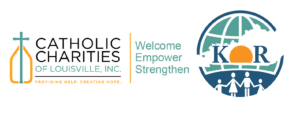What is the Refugee Resettlement Process?
Refugee resettlement is defined as the transfer of refugees from the country in which they sought refuge to another nation that has agreed to admit them as refugees and/or grant permanent settlement there. In 2021, 79 countries participated in the formal refugee resettlement program, including the United States. The U.S. has always been a world leader in the resettlement of refugees.
The United States Refugee Admission Program (USRAP) was formalized through the Refugee Act of 1980. The number of persons who may be admitted to the United States as refugees each fiscal year is established by the President in consultation with Congress.
The U.S. Department of State: Bureau of Population, Refugees and Migration (PRM) directs admission policies and coordinates the overseas processing of refugees. PRM is responsible for the transportation and initial reception and placement of refugees, referred to as the R&P Program. Each refugee approved for admission to the U.S. is resettled by one of nine national voluntary agencies participating in the R&P Program under a cooperative agreement with the Department of State. These nine agencies have affiliate offices located across the U.S.
After initial arrival, the Office of Refugee Resettlement (ORR) provides funding to state-level offices and local service providers to coordinate post-arrival services which promote employment, self-sufficiency, and community integration.
Refugees have legal status upon their entry to the U.S. They have an immigration document called an I-94. After twelve months of residency, individuals admitted as refugees are required to apply for adjustment of status to that of permanent resident. After five years in the U.S., they are eligible to become U.S. citizens through the naturalization process.
